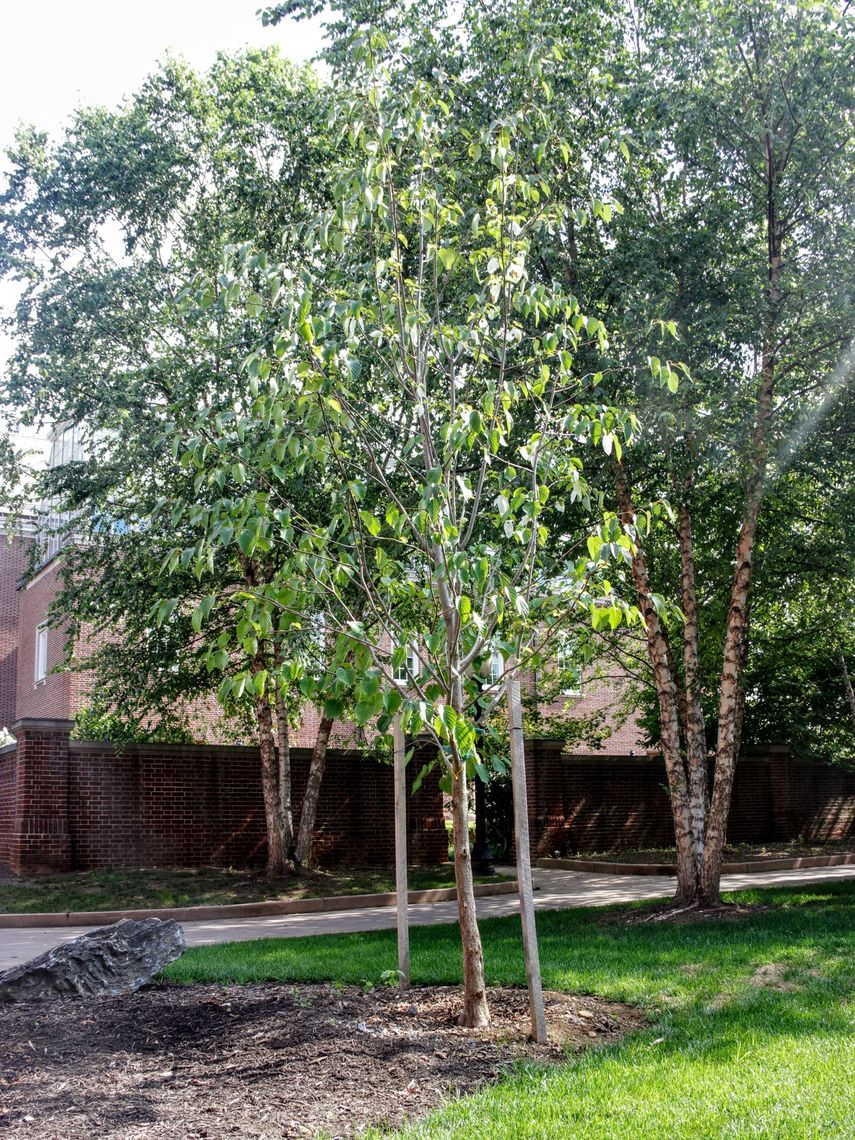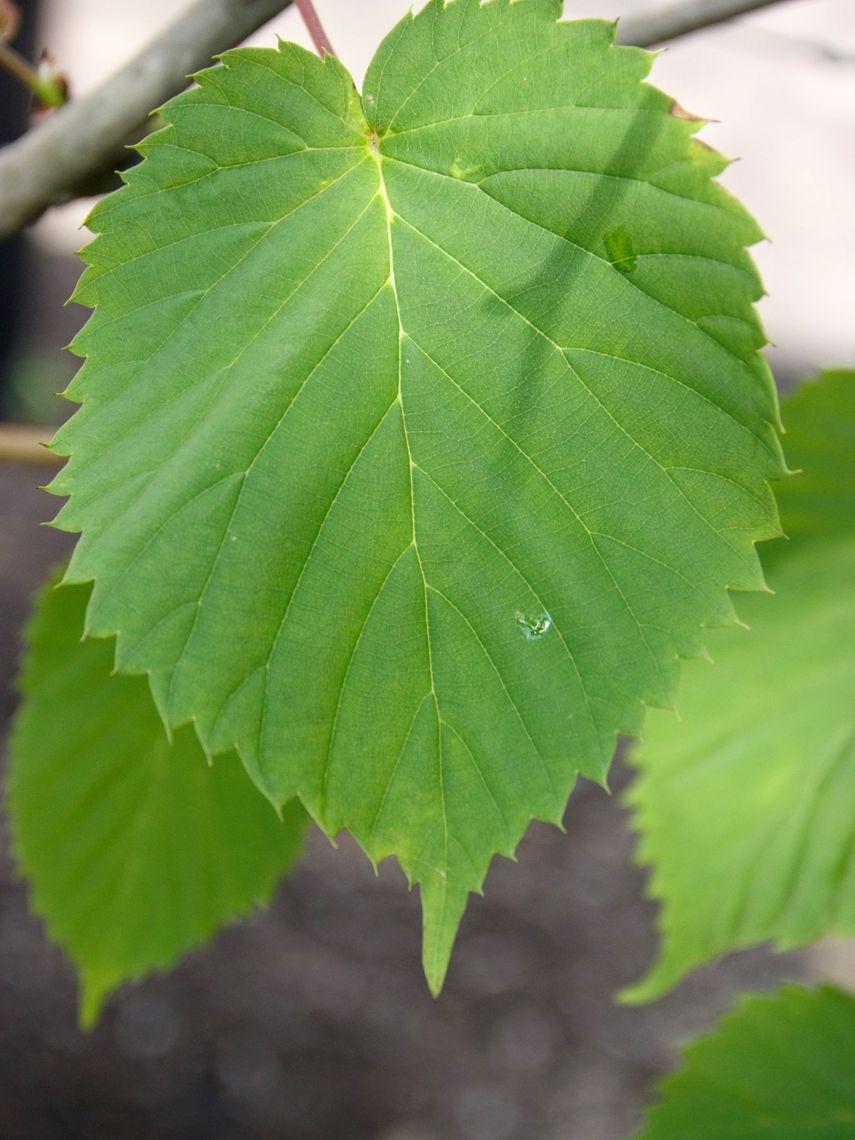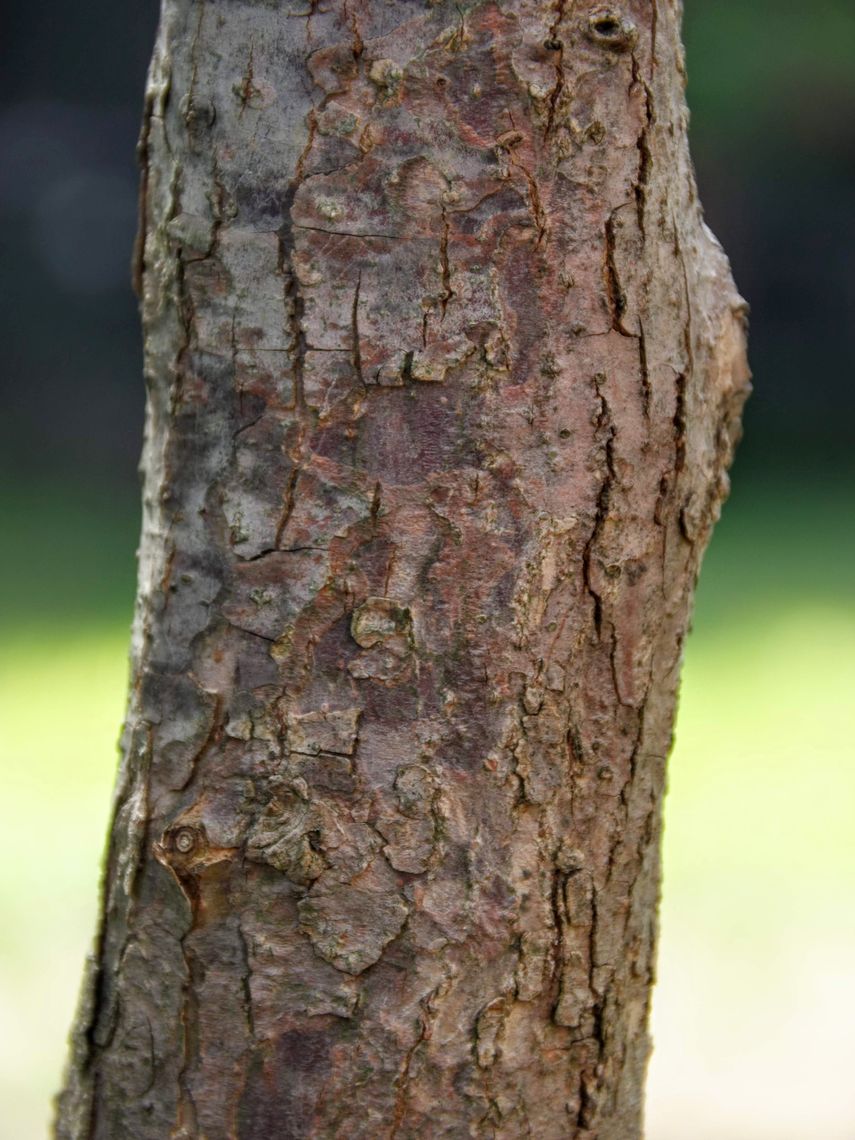Dove Tree (Davidia involucrata)
The dove tree gets its common name from its flower, which is covered by two long, white, petal-like bracts that hang down. When they blow in the wind, these petals are said to look like a dove's tail or a handkerchief. This interesting feature has lead to the creation of other common names, such as the handkerchief tee, the laundry tree, and the ghost tree. The tree's leaves are deep green, prominently toothed, and heart shaped at the base. Its bark is orange-brown, scaly, and exfoliating.
Family: Nyssaceae (sour gum)
Characteristics: The 2-inch to 5-inch-long leaves are cordate, prominently toothed, and deep green. In the fall, leaves turn dull pastel colors to bright oranges and reds. Two long, creamy-white, petal-like bracts surround the tree's true flower. These bracts hang down, making the flower look like a dove's tail. One bract is 6-7 inches long and the other is 3-4 inches long. These flowers are followed by green-brown, golf ball-sized fruits. Bark is orange-brown, scaly, and exfoliates. This tree is distinctly pyramidal when young and develops into a pyramidal-oval to rounded shape with age. It grows 20-40 feet high and wide.
Foliage: Deciduous (leaves lost seasonally)
Geographic Origin: Southwestern China (non-native)
Cultivation Notes: Requires medium maintenance. Does best in part-shade, though can also
tolerate full sun. Prefers moist and well-drained soils.
Number on Campus: 1
Sources: Dirr, Morton Arboretum, Missouri Botanical Garden
Tree pictured is young. For photographs of a more mature tree see:Â
http://www.missouribotanicalgarden.org/PlantFinder/FullImageDisplay.aspx?documentid=17448Â (tree)Â
http://www.missouribotanicalgarden.org/PlantFinder/FullImageDisplay.aspx?documentid=17451Â (white "petals")
Â



